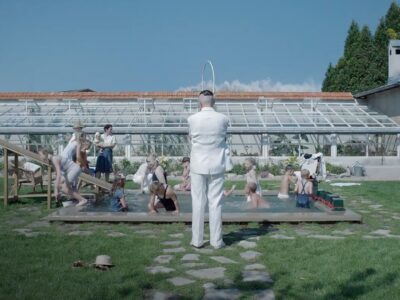Anatomy of a Fall subverts the stereotypes of the courtroom drama genre with its riveting character study, writes Srivathsan Nadadhur
In an interaction with Sight and Sound magazine the previous year about her Oscar-nominated courtroom drama Anatomy of a Fall, French director Justine Triet said the idea of truth didn’t interest her. She places a flawed protagonist, who’s suspected of killing her husband, in the middle of a court trial, focusing less on the ‘crime’ and more on the psychological trauma of her pivotal characters.
The story revolves around the sudden death of Samuel Maleski, who allegedly falls from the third storey of their newly renovated house. The normalcy in the lives of his writer wife Sandra and a visually impaired son Daniel, is shattered. Samuel and Sandra’s tense marital life and the absence of a first-hand witness, force authorities to come up with their theories and complicate matters.
Not even Sandra’s advocate friend is ready to buy the theory of her husband falling from the topmost floor of his residence, perhaps committing suicide. Despite the complex situation, Sandra is unwilling to compromise on her integrity. She admits to her bisexuality, cheating on her husband once and borrowing a core idea of her husband’s unfinished novel (with his permission).

Justine Triet creates a linguistic barrier to enhance the film’s dramatic appeal. Sandra is a German native, advised to speak French in court despite being more comfortable in English. The language is used as a potent tool to explore Sandra’s plight. The background score is intentionally absent during key sequences, avoiding any element of sentimentality in the storytelling.
From the chaotic marriage to societal/gender prejudice, the media trial and the absence of concrete evidence to validate her claims – all odds are stacked against Sandra. A journalist even remarks that the idea of a writer killing her husband, borrowing a leaf or two from her novels, is juicier than that of a man ending his life.
Until a crucial audio recording of their bitter banter surfaces, Justine Triet makes it very hard for us to root for Sandra. Her son Daniel makes a valid statement in a pre-climactic sequence at court, where he says it’s necessary to understand why the ‘incident’ took place rather than how. His father’s death and the subsequent drama forces him to grapple with adulthood early.

It’s hard not to feel for Samuel and his unresolved trauma too. He gives up a flourishing career in academics to explore a career as a writer and returns to his sleepy home town. From overcoming a personal tragedy to not finding enough time for his creative pursuits at home and watching his spouse grow in stature rapidly, Samuel has enough baggage to handle.
Anatomy of a Fall works equally well as an investigative procedural drama, but it constantly strives for realism. It’s justified better when the director treats the courtroom proceedings like raw footage. It refuses to lend any overt cinematic flourish or colour its characters with a label and pushes the viewer to read between the lines. As a result, it gets excessively ‘talkie’ and dry at times.
The director intentionally chooses a familiar premise, creates compellingly flawed characters and subverts stereotypes associated with the genre. Sandra Huller’s part-resilient, part-vulnerable portrayal contributes to the intrigue around the protagonist. Swann Arlaud, as the advocate and Sandra’s former lover, makes us feel there’s more to him beyond the obvious.
Milo Machado Graner’s part as the pre-teenager Daniel shows it’s possible to write children’s characters that are equally intelligent and innocent. A canine gets to drive the story as much as the pivotal roles. The cold ambience of a snowy hilltop, the noisy courtroom talk, the western classical touches (through Daniel’s musical leanings), the extended silences, result in a unique audio-visual experience.
(Nominated in the Oscars across Best Picture, Best Director, Best Actress, Best Original Screenplay, and Best Film Editing categories, the film is playing in theatres in India)
















